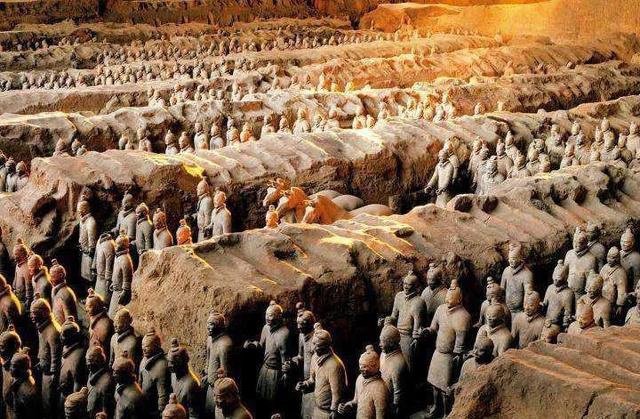Qin Shihuang Mausoleum Museum released the results of the third excavation of Qin Terracotta Warriors and Horses Pit No. 1 on January 12. A total of more than 220 pottery warriors and horses were cleaned up, including 16 pottery horses; 4 chariots, 2 drums, 1 drumstick, and lacquered shields. 1 place, 3 places for cages; many places for weapons, and many places for bows and arrows; chariots and horses, weapons, production tools, etc., totaling more than a thousand pieces (groups).
Shen Maosheng, a researcher at the Qinshihuang Mausoleum Museum, said that the archaeological excavation showed that the corridors of the terracotta pits had been dug by people, and it is speculated that someone used the corridors to enter the terracotta pits. The archaeologists speculate that the people who can use the corridor to enter the pit for destruction must be those who participated in the construction of the pit and think of the Qin soldiers who surrendered to Xiang Yu. If these people accepted Xiang Yu's order to destroy, they must be familiar with the road. Therefore, The signs of the corridor can provide very strong evidence for Xiang Yu's destruction of the Mausoleum of Qin Shihuang and the Terracotta Warriors and Horses Pit.
The burial pits of the Qin Terracotta Warriors and Horses are a group of large-scale burial pits outside the Mausoleum of the First Emperor of Qin. Pit No. 1 is the largest, rectangular plane, 230 meters long from east to west, 62 meters wide from north to south, and 5 meters deep, with a total area of 14,260 square meters. It is estimated that more than 6,000 pottery figurines and pottery horses can be unearthed after all the excavations. From 2009 to 2022, the Qinshihuang Mausoleum Museum conducted the third official excavation of Pit No. 1. The excavation location is located at T23 and T24 of Pit No. 1, including four passages G8-G11, three partition walls Q8-Q10, and the pit of figurines. The third part, including the north wall, has an excavated area of about 430 square meters.
